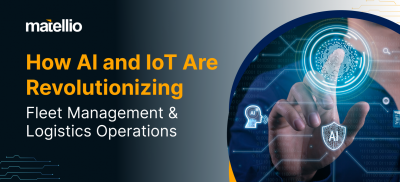
The COVID pandemic compelled digital transformation, which touched practically every industry in the world. Digitalization has had a significant impact on the education sector in recent years.
Undoubtedly, the growing competitiveness is the driving force behind the demand for digital transformation in the education industry. Every educational institution today must enter the online learning sector in order to keep up with the industry’s speed.
But what exactly is digital transformation services? And why is it so important in the education industry? Let’s find out!
In this blog, we’ll discuss the idea of digital transformation in education in more detail and look at some ground-breaking examples of how educational organizations can embrace it.
The process of replacing manual, conventional, and outdated business operations with the newest digital alternatives is known as digital transformation. This innovation influences a business’s entire operation, not simply its technology. Through the conversion of manual procedures into quick digital ones, digital transformation aims to enhance user experiences, streamline business processes, and boost productivity. Improvements in operational efficiency caused by digital technology can benefit almost every business in any industry. Also, the advantages of embracing digitalization in the education industry are remarkable. Education nowadays needs to be interactive and collaborative. The use of technology in the classroom is having a significant impact on how teachers approach teaching. By creating a world of limitless opportunities and collaboration, digital transformation has a positive effect on student learning. If you are planning transformation for your institution, an elearning development company can help you with new implementations available in the niche. Both online and traditional schooling are being changed by digitalization. eLearning is advancing more quickly and more effectively as a result of the introduction of numerous digital eLearning solutions. Everyone participating in the e-learning process is now more familiar with IT and has access to it as a tool, thanks to the digital transformation of the education sector. Teachers and students today have far more familiarity with various e-learning solutions. Also Read: A Complete Guide on eLearning Software Development The advantages of digital transformation in the education industry are: The fact that students can access resources at any time, day or night, is among the most significant advantages of embracing digital transformation in the education industry. This allows students complete choice over where and when they study, allowing them to choose the most influential periods and amount of study time for themselves while also having access to a global community. Digital transformation can also be used in education as a collaboration tool to bring people together through video conferencing, allowing students and teachers to use shared documents. Since each individual has unique learning styles and approaches, eLearning can aid in enabling tailored learning. The delivery of teaching and learning can be made more effective by using digital learning to help students and teachers understand the best teaching techniques for them. Additionally, digital analysis can assist educational institutions in better knowing how well their students are participating in particular course components or the institution as a whole. This means that educational institutions have the resources to respond more effectively to situations where students are growing disengaged and having difficulty with the course. A more practical method of monitoring student performance is introduced through digitization. Technology can be very helpful in recording the finer details of students’ work, which enables teachers and parents to track a student’s development. A clearer knowledge of who is progressing and who needs more attention can be gained, for one, by periodically comparing handwriting or creative work to content that has already been digitally preserved The future-focused curriculum must be taught in institutions. Automation, robotics, and artificial intelligence are no longer a term for science fiction films. Facts show that the workforce’s needs are changing and that they will continue to expand significantly in the future. Yet, educational institutions are not prepared to adequately teach these skills. It won’t take as long to prepare and update curriculum updates. More current and relevant content is available to students. The digital transformation has assisted universities and colleges in education in meeting ADA compliance requirements, expanding accessibility initiatives for students with disabilities, and reducing the cost of these services. For instance, institutions generate lecture notes for deaf or hard-of-hearing students using technologies like speech recognition and automatic transcription. This can be used to review lessons by other students and teachers. More blind or visually impaired students can read and annotate digital content using digital tools like text-to-speech generators. The usage of the following technologies is frequently part of digital transformation in the education sector: Digital technology’s massive collection of student data enables a sharper emphasis on learning specifics. Educators can detect and address patterns of where kids struggle or perform well in the curriculum by compiling and analyzing vast volumes of data. Trends in performance and later careers can be monitored. Data analysis findings can be used to update and enhance learning and course design. A couple of other cutting-edge technologies in education are virtual reality and augmented reality. Technology is being used by teachers in the classroom to develop original lessons and personalized learning approaches. For instance, they may transport the entire class to a different planet or bring extinct species into the classroom. In order to assist virtual orientations for students who are unable to visit campus in person, universities are also utilizing augmented reality. A common example of digital transformation in education is artificial intelligence. It is employed actively in a variety of spheres of human existence, including education. With text and voice recognition tools, AI and ML help students and tutors. AI chatbots, for instance, can converse with and educate pupils while also tracking their development. To verify that students are not cheating, AI assessment systems and facial recognition tools examine students’ behavior during exams or tests. Additionally, artificial intelligence can be incorporated into content and learning management systems to produce additional AI-enabled learning aids that give students answers, detailed explanations, and step-by-step instructions. Due to their flexibility, such a learning strategy will boost students’ efficiency. Also Read- Artificial Intelligence in Education: Benefits, Application and Development Virtual classrooms leap the boundaries of conventional teaching by enabling true digital learning. Virtual classroom software enables video conferencing and allows students to tribute multimedia files, take quizzes online, edit documents with annotations and bibliographies, and monitor course materials. Writing to-do lists and taking notes are as outdated in today’s world as using a pager. Teachers use specialized collaborative tools to plan the learning process, set tasks, and transmit learning materials. It facilitates better time management and increases output. With remote learning, administrative and operational activities continue. Automation can lessen some of this strain, allowing educators to devote more time to instruction rather than administration. For recruitment, attendance control, parent alerts, and other purposes, school systems can employ digital transformation in the education industry. The most well-known examples of digital transformation in education are learning management systems (LMS). Custom LMS developed by LMS developers has enabled institutions to plan and organize all educational procedures and track the effectiveness of teaching methods and student growth. Read More: SaaS Based LMS Guide The digital transitions that are well-planned and well-implemented are the most efficient. How do you formulate a winning plan? Below are some tips: Make absolutely sure everyone on your team is aware of the purpose behind the initiative before you get started. To move forward, you must be in accordance with your current condition. The best digital transformation goals frequently include key performance indicators (KPIs), which are measures that let you monitor your advancement. Your education business cannot be transformed overnight. Instead, make a modest adjustment, assess it, and then repeat. It is more likely for digital transformation projects to be successful if they develop over time than if they are implemented all at once. If you keep your plan fairly flexible, you may make minor adjustments along the road and quickly respond to shifting circumstances. One of the most essential steps in successfully putting a digital transformation in the education industry plan into action is making a wise technology choice. Technology must be chosen in accordance with your needs, and you must make sure that your decisions support the aims and objectives you established in the first step of this process. Research and hunt for technological solutions that meet your needs without going over budget, rather than embracing popular ones blindly. Cloud computing, the IoT, AI, digital twins, ML, robotics, and augmented reality/virtual reality (AR/VR) are some regularly utilized technologies that could be essential in attaining successful digital transformation in the education industry. In digital transformation, collaborating with an experienced professional is usually advantageous. The detailed work of successfully implementing a digital transformation plan can be made more challenging if it’s your first time managing such an extensive organizational transformation. You can successfully implement digital transformation in the education industry by working with an enterprise software development company that shares your values and upholds transparency. Read More: Hire Dedicated Developers for Project Development In addition to technological improvements, digital transformation in the education industry necessitates a cultural shift. Teachers and administrators need to implement a new way of thinking about teaching in today’s digitally-immersed classrooms. The process of digital transformation in education is crucial if you want to keep your competitive advantage in today’s challenging business environment. To guarantee that it is implemented effectively, you must use specific best practices. By creating a clear road map and looking for the most acceptable strategic technology partners, you can achieve successful digital transformation and sustain it for many years. What is Digital Transformation?
What Is Digital Transformation in the Education Industry?

Benefits of Digital Transformation in the Education Industry!
Easy access to course materials & better collaboration
Personalized learning & better engagement
Better performance tracking
Future-focused curriculum
Better accessibility
How Is the Education Industry Undergoing Digital Transformation?
Big data
AR/VR integration
AI/ML
Virtual classrooms
Collaboration tools
Automation
LMS

How to Build a Digital Transformation Strategy for the Education Business?
Identify your goal
Iterate in a timely manner
Choose tech stack wisely
Hire experts
Conclusion


